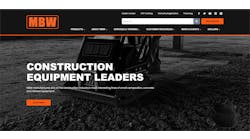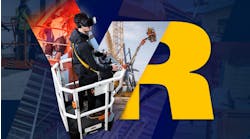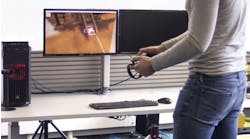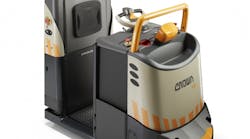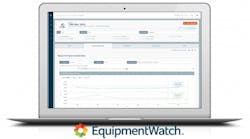Technology has significantly changed the rental industry and society as a whole over the past several years. Fifteen years ago most of us were still carrying pagers, some of us had cell phones, and everyone was still getting comfortable navigating the Internet. Today, the majority of us have a computer in our pocket in the form of a smartphone. How are you embracing technology to help ensure your customers have an enjoyable rental experience once the equipment has been picked up or delivered?
What about those times when you get a call from an angry customer complaining about your equipment, only to find out later that it was operator error? How are you handling those all too common situations? Better yet, what are you doing to prevent them?
Years ago we had VHS tapes of “How-to Videos” that we would play in our showroom and send out with certain rentals, such as floor sanders. Today, the Internet is the best way to share information with customers on an as-needed basis. Many rental companies make the effort to create their own personalized videos for safety and operation of their product offerings and post to them to their website.
However, if you are short on time or resources then why invent the wheel? Manufacturers and the American Rental Association typically have free online video libraries and free DVDs as well for those that want a more traditional option. YouTube and other websites are also a great resource with countless videos offering tips, tricks, and advice for your rental customers to help them get their job done. Simply locate the ones you like and share the links on your own website or YouTube page.
But you also can use video in your day-to-day operations to simplify service issues. Let me give you an example. Do any of these scenarios sound familiar?
- A homeowner rents an aerator on a busy Saturday and calls two hours after you close up shop stating that the machine will not start. You know the employee that loaded the machine for the customer went over how to operate the machine safely, however you run the typical triage over the phone, explaining step by step how to start the machine. After 10 minutes of back and forth, the aerator still will not start. Since it was a busy Saturday you know that you do not have another aerator for an exchange so you reluctantly call a service tech at home to leave his daughter’s soccer game to go repair the machine at the customer’s site. When the mechanic arrives, he notices the fuel shutoff valve is in the closed position, closed by the employee at the shop for safe transport. The mechanic opens the valve and the aerator starts right up.
- The phone rings five minutes after you open on Monday morning. You have a line of people in front of you eager to return their weekend rentals and get to their own jobs. The caller on the other end is a contractor with an electric scissor lift on rent. He is very upset that his crew is standing around because his lift will not move, despite the fact that it was plugged in to charge all weekend. All of your truck drivers have already departed on their first run of the day so you know it will be a at least a few hours until you can get the customer a new machine. You send your road tech out to the customer’s jobsite with a truck full of tools and even a set of expensive batteries – just in case. Upon arrival, the mechanic immediately notices that the machine is plugged in and asks the customer if this is in fact the plug that was used to charge the lift over the weekend. The aggravated contractor responds with an obvious yes. The mechanic sighs as he sees that the plug used was in fact the source of the problem as the customer had been trying to charge the lift using the auxiliary power cord to run tools from the platform, not the battery charger plug.
How much time, money, and frustration would have been saved for everyone involved if you could solve these problems from anywhere in the world without ever having to visit the customer’s site and could have gotten them up and running within minutes? Granted, not all service calls can be solved in this manner and the rental employees involved followed the accepted protocols of instructing the customer upon delivery of the equipment and tried to solve the problem over the phone before sending out a road tech. The only missing element preventing your staff from helping the customer was the ability to “see” the equipment before making a trip out to repair the machines.
What if I told you there are many ways to remotely see your equipment and help triage service calls over the phone? And what if I let you know that such technology is readily available free of charge? Got your attention now? All it takes is a little creativity and education. The same technology can also aid customers having problems in the field, drivers, sales reps, and mechanics.
How about this scenario:
- You get a call from a customer who rented a skid-steer loader, complaining that it is leaking fluid all over the ground. You ask the customer if he knows what type of fluid and he says that he has no idea as he cannot tell where it is coming from. You then ask the customer if he has an iPhone and the FaceTime app. The customer responds that he does. Since you have FaceTime on your iPhone as well, you ask the customer to show you the machine using his phone. You hang up the landline and call the customer back using the FaceTime app. When the customer answers you can see him and hear him clearly on the phone. You proceed to ask the customer to walk around the machine showing you the fluid on video, and where it may be coming from.
After a few moments of trial and error, you see a drip running down a hydraulic hose and ask the customer to follow the hose up with the camera. Ah ha! There it is: a simple hydraulic leak. You let the customer know that it appears to be a simple repair of a hydraulic fitting. You let him know that the machine will be up and running within the hour. You dispatch your road tech armed with the useful information you found so that he is prepared upon his arrival on site. The customer is back up and running in no time with minimal environmental impact and cleanup.
This scenario has a much better outcome even when the customer does not know what is wrong (and as rental operators we cannot expect that from our customers anyway). You could have just sent a tech to visit the machine and figure out what type of leak it is and where it is coming from but what if the mechanic did not have the type of fitting needed on his truck? Using video analysis saves time and money by alerting the tech to exactly what is wrong before he or she arrives on site, because you have actually seen the equipment remotely at no additional cost to you!
In addition to Apple’s FaceTime there is other free software across other devices that can be used in similar ways. There are too many to mention but a couple of the more popular ones are Skype and Snapchat. Implementing one or two of these technologies into the daily operations of your business will greatly enhance your ability to service your customers. Be prepared to educate both employees and customers. But imagine the possibilities! If your after-hours procedure is to pass around an on-call pager then you are in the dark ages and may as well be hand writing rental agreements.
Many rental companies now use a call center (either in-house or outsourced) but many others still forward the branch line to cell phones or share an after-hours phone that is carried by a branch employee. What if you made that after-hours phone a smartphone? The phone could be loaded with every app needed for an employee to help a customer or another team member, regardless of locations – including the ability to log into your computer network and use teleconferencing to diagnose service calls. You could include a Skype link on your website that calls your after-hours phone directly, 24/7, with one of your smiling happy employees on the other end ready to serve. If customers rented a machine from their local rental store and had a problem late at night using the equipment, wouldn’t they have a much better experience if the same person that greeted them at the counter greeted them on Skype at 2 a.m. instead of a third-party phone center that knows nothing about rental and has to go down a phone tree of sleeping people to finally have someone call them back?
Granted, the situations described in this article may be a stretch and there are other ways to solve each of them, but these situations do happen. Take a step back at your rental operation and evaluate how you are utilizing free and readily available technology to help you differentiate yourself from the competition. Technology no longer consists of just being able to reach someone on the phone or send an e-mail. Use such technology to your advantage. Think outside of the box and be legendary.
About the Author:
Daniel McCoy, MBA, is a business teacher and owner of McCoy Consulting serving the rental industry out of Raleigh, NC. Please visit his website at http://mccoyconsulting.weebly.com/.

